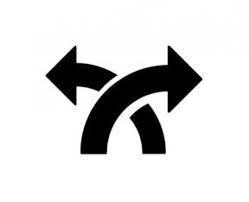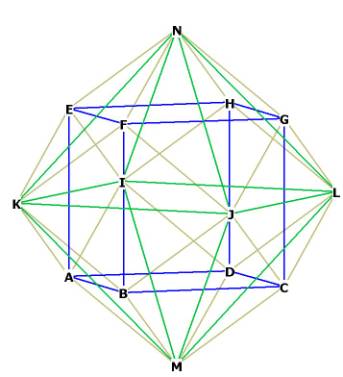|
(2019
midterm assignment) Model Midterm answers 2019 (Index) Essay 3: Web Highlights |
 |
Breanna Runnels
Transitions of Science Fiction
There are many different subjects we
could choose within science fiction including time travel, the role of women,
the presence of disease, the question of future currency, and many more. One of
the most mentioned themes that I have found throughout the model assignments is
the concept that science fiction has changed and progressed over time. One of
the constant features of science fiction that I have found is the lack of the
evolution and decline in basic human necessities like emotion or being able to
function without technology or survival skills.
The first model assignment that I found
that supports the idea of constant religious imaging within science fiction was
Tanner House’s “Artificial Extinction”. From his piece I learned about
transhumanism, which could possibly be seen in “Stone Lives”. His paper states
that “the term “transhumanism” is originally credited to British biologist
Julian Huxley, and is essentially the idea that the human condition and human
physiology can be greatly bolstered and enhanced with the integration and
further development of technology. Common applications of transhumanism are
things like cybernetic implants, prosthetics, and machine integrated/synthesized
learning.” While this does help the disabled or disenfranchised the opportunity
the make up for their disabilities, it also places the rich and abled at an
unfair advantage quite quickly. He states that he is “fascinated with the human
condition, and this ascension/evolution implies something that is strictly
inhuman. Artificial integration is not natural selection.” The human body is
changing to become less human, which is a feature common in many pieces of
science fiction.
Going with the theme of humans becoming
more inhuman, it leads you directly to the Eloi and the Morlock in
The Time Machine. Christa Van Allen’s
“Singularity and Human Empathy” explains the idea of singularity, “a
hypothetical moment in time when artificial intelligence and other technologies
have become so advanced that humanity undergoes a dramatic and irreversible
change”, in the perfect way. The Eloi have become so dehumanized and lack basic
human survival skills that they have become a species in infinite fear. She says
that the “Eloi, small, childish specimens of human evolution that have become so
used to the care of their basic needs by their subterranean cousins that they
are lazy, dumb, and weak. They are unable to understand the very intelligence
which keeps them alive, and so quite honestly they’re lucky that their farmers
are the only predator they have to worry about.” With the decrease in humanity,
the Eloi are a creature in constant fear.
While not all hope is lost in science
fiction’s use of humanity, there must be a human acceptance of “change as a
progress of decline”. When reading Zach Thomas’ “Where is Our Humanity”, it
seems that he has a good grip on how humans feel about the change as it is
currently approaching them. He writes that “We also may interpret that through
evolutionary measures are we able to contribute to improvement or de-escalation.
For Lauren in Parable, her view of humanity was for progress that was
spurred on by a unique belief system. Much different from her father’s
view of “just stay put and don’t
do something risky,” Lauren is pushed out of her home to desire a place that is
later named Acorn, by any means necessary.” Though humans are the ones directly
affected by the improvement or de-escalation of human nature, they are also the
only ones that can make these changes happen or improve off of them when the
evolutionary factor has reached its peak.
Humans are the easiest subject to study
when focusing on the theories of evolution and the advances or declines in human
nature, as it is what we are closest to. Thomas states that “we as humans will
hold onto certain institutions of modernity that leads us to believe we are
improving society.” As a human in current times it is hard to see that we are a
society that is experiencing evolution as we are only experiencing the times
that we currently live in. Looking into these pieces of science fiction allows
us to question the life of humans and the possibility that every action that we
make can lead to an evolutionary or apocalyptic effect, we just have to take our
risks. These three authors allow the reader to gain insight into how science
fiction embrace the idea of humanity’s degradation in the future or the (small)
possibility of improvement.
 |
 |
 |
